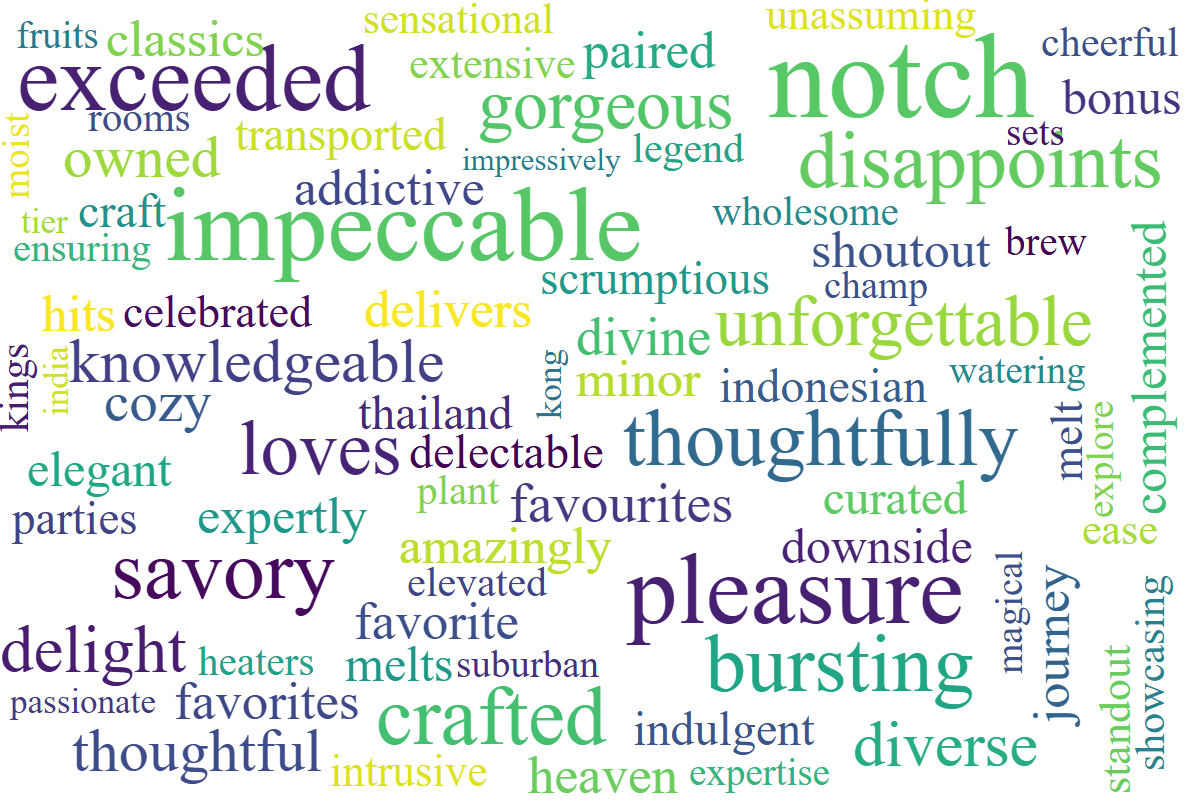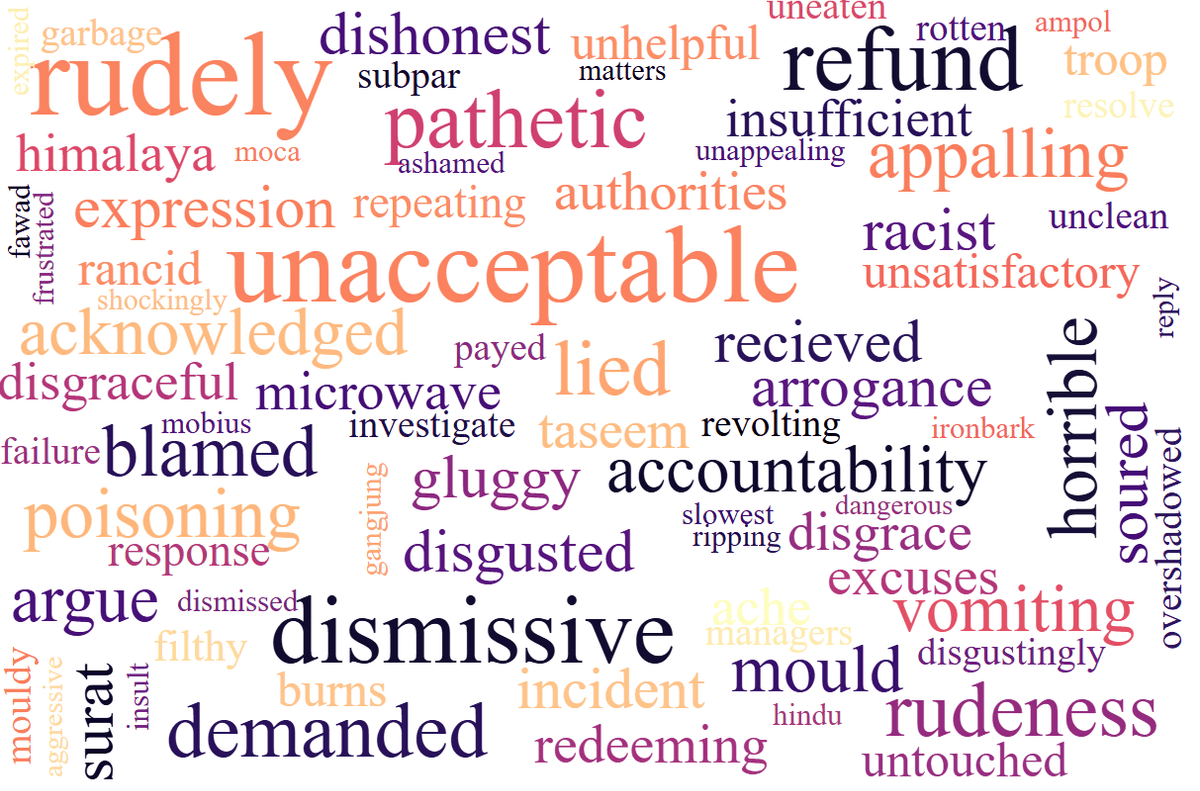In the competitive restaurant industry, customer feedback isn’t just noise—it’s a roadmap to success. Every review, whether a glowing 5-star rating or a critical 1-star comment, holds valuable insights that chefs and restaurant owners can use to refine their offerings, improve service, and boost customer satisfaction.
By analyzing 12,268 customer reviews from restaurants in Sydney, we’ve uncovered key trends that reveal what diners love (and hate) most. In this post, we’ll explore:
Why customer comments matter
Word Cloud Highlights
What chefs can learn from feedback trends
Why Customer Feedback is Your Secret Weapon
- 83% of diners check reviews before choosing where to eat
- 1 negative review can cost you 30 customers
- Top restaurants increase revenue by 37% by acting on feedback
The Passion Behind the Magic
The most telling insight from our analysis? The word "passionate" appeared consistently alongside "outstanding" and "loves." Customers can sense authentic dedication. When a chef pours genuine passion into their craft, it transforms beyond technique into something that resonates emotionally with every guest. This isn't coincidence—it's the difference between sustaining a business and creating a destination.
The Art of Seamless Excellence
Perhaps most intriguingly, diners frequently used the word "seamlessly" to describe their experiences. This reveals something profound about culinary mastery: the best chefs make complexity appear effortless. Behind every "seamless" service lies countless hours of practice, preparation, and precision. Yet to the diner, it feels like magic—and that perception becomes part of the memory they carry forward.
Our data revealed another striking pattern: positive food terms appear 3x more often than service or ambiance words. While atmosphere matters, it's the culinary artistry that truly drives memorable experiences. This puts extraordinary pressure—and opportunity—squarely in the chef's hands.
Building Community, One Dish at a Time
The prominence of words like "neighborhood" and geographic references—"nashville," "india," "thailand"—tells another story. Exceptional restaurants don't exist in isolation; they become woven into the fabric of their communities. Chefs who understand this create more than just great food—they build gathering places where memories are shared across cultures and generations.
The Ripple Effect of Memorable Dining
When dining becomes memory creation, the impact extends far beyond a single meal. Those "addictive" flavors bring customers back. Those "unforgettable" moments get shared with friends and family. The "dedication" customers observe in the kitchen becomes the foundation of trust and loyalty that sustains restaurants through any challenge.
For chefs considering their next opportunity, the message is clear: your role extends far beyond the kitchen. You're not just preparing food—you're architecting experiences that become part of people's life stories. In a world where experiences matter more than ever, that's not just a job—it's a calling.
What Customers Talk About Most
Most Frequent Positive Words

✅ Food-Related:
- "Delicious," "fresh," "flavorful," "perfect," "authentic"
- Cuisine-specific terms: "pasta" (Italian), "dumplings" (Chinese), "coffee" (cafés)
✅ Service & Experience:
- "Friendly," "attentive," "quick," "welcoming," "amazing service"
✅ Ambiance:
- "Cozy," "relaxing," "great atmosphere," "vibrant"
Most Frequent Negative Word

❌ Food Complaints:
- "Overcooked," "bland," "salty," "small portions," "cold food"
❌ Service Issues:
- "Slow," "rude," "inattentive," "long wait"
❌ Value Concerns:
- "Overpriced," "expensive," "not worth it"
Key Insights from Word Clouds
1. Food Quality is the #1 Driver of Satisfaction
- Top Mentioned Dishes:
Italian: "pasta", "pizza", "tiramisu"
Chinese: “noodle”, “dumpling”,”cantonese”
Cafe: “burger”, “coffee”, “bacon’
Why It Matters:
- Positive food terms appear 3x more often than service/ambiance words.
- Negative food comments (e.g., "overcooked steak") correlate strongly with 1-2 star reviews.
2. Service Speed & Friendliness Are Critical
- Fast service is praised in 68% of 5-star reviews.
- Slow service is mentioned in 42% of negative reviews.:
"The food was great, but we waited 45 minutes for our mains—unacceptable for a weekday lunch."
3. Ambiance Impacts Repeat Visits
- Words like "noisy," "crowded," "uncomfortable" appear in 23% of negative reviews.
- Positive ambiance terms ("romantic," "chill vibe") appear in top-rated restaurants.
What Chefs Can Learn from Feedback Trends
🚨 The 3 Biggest Restaurant Killers (And How to Fix Them)
1. Food Quality Issues
🔴 Danger Words: "Overcooked," "bland," "s
alty"
✅ Fix It:
- Standardize recipes & cooking times
- Train staff on "perfectly cooked" standards
- Feature "Most Reviewed Dishes" on your menu
2. Slow/Rude Service
🔴 Danger Words: "Slow," "rude," "ign
ored"
✅ Fix It:
- Implement 15-minute service checkpoints
- Train staff to use "We appreciate your patience"
- Offer complimentary starters if delays occur
3. Poor Ambiance
🔴 Danger Words: "Noisy," "crowded," "uncomfort
able"
✅ Fix It:
- Adjust lighting/music based on peak hours
- Create Instagrammable corners for social buzz
Quick Wins:
Highlight popular dishes (e.g., "Try our best-rated pasta!").
Address common complaints (e.g., "We’ve improved our wait times!").
Conclusion: Turn Feedback into Growth
Customer reviews are more than just ratings—they’re a free consulting report for your restaurant. By listening to feedback, chefs can refine their craft, and owners can create unforgettable dining experiences.
Next Steps:
- Track your reviews weekly.
- Spot trends (e.g., rising demand for vegan options).
- Act on insights to stay ahead of competitors.
"The best restaurants don’t just serve food—they evolve with their customers."

